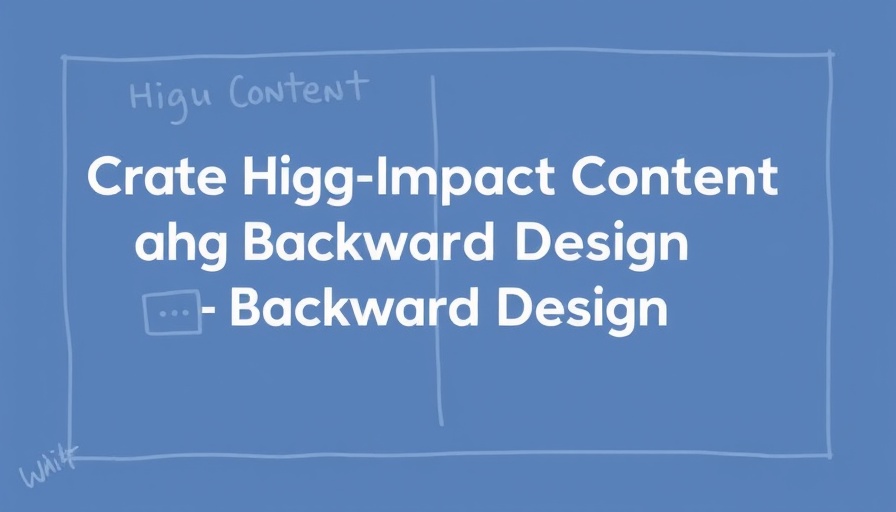
Crafting Impactful Content: Embrace the Backward Design
In today’s content marketing landscape, simply creating great material is not enough; marketers need a strategic approach to achieve measurable results. Backward design offers a unique pathway to enhance the effectiveness of content creation by starting with desired outcomes in mind.
The Essence of Backward Design
At its core, backward design flips the traditional content creation process. Rather than developing content and waiting to measure its impact, you begin with the end goal. What do you want to achieve? This could be increased brand awareness, greater audience engagement, or ultimately, improved sales figures. By addressing these questions first, marketers can frame their content strategy to align with tangible business objectives.
Prioritize Measurement for Success
Choosing appropriate metrics is just as critical as defining success. A common pitfall among marketers is to plunge into the creation of content without a clear understanding of how success will be measured. By determining these metrics first, you create a roadmap that guides your content decisions and reduces uncertainty. Whether it's tracking click-through rates, social media shares, or customer retention, these data points provide valuable insights into your content’s effectiveness.
Aligning Content With Business Objectives
Understanding what your leadership considers successful is crucial. As Purna Virji articulates, aligning your content strategies with the definitions of success established by your CFO or executives ensures that marketing efforts are not just creative but also effective in driving business growth. If the end goal is profitability or brand loyalty, content production should be crafted with those targets firmly in mind.
Real-World Applications of Backward Design
Consider how various brands have successfully employed this approach. For instance, a company aiming to boost sales might create targeted video content that highlights customer testimonials. By focusing on the desired outcome—boosting sales—the company can tailor its message and delivery to engage potential customers effectively.
Innovative Strategies to Elevate Your Content
One effective strategy within backward design is creating interactive content, such as quizzes or polls, which encourages audience participation and can be tailored to focus on business outcomes. Alternatively, visual storytelling through infographics can break down complex data and cater to an audience’s preference for digestible information while aligning with measured successes.
Steps to Implementing Backward Design
To effectively utilize backward design, follow these steps: 1) Define success and key performance indicators relevant to your business goals; 2) Develop content that directly addresses these goals; 3) Measure outcomes regularly and adjust your approach based on the data collected. This agile method allows for more informed decision-making as the campaign progresses, ensuring relevance and impact.
As you consider your next content marketing initiative, take a moment to reflect on what success looks like for your brand and how backward design can not only streamline your creation process but enhance the overall marketing effectiveness. By putting these principles into practice, you empower your team to create content that truly resonates and drives results.
 Add Row
Add Row  Add
Add 




Write A Comment